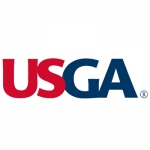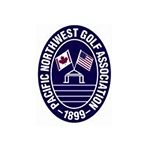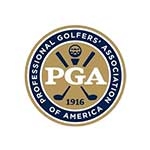Rule of the Month: Legal Tender
By Sr. Rules Officials: Pete Scholz and Terry McEvilly
Click Here for the Rule of the Month Archive
The Flagstick
Most people don’t know that there is no Rule that requires the Committee in charge of a competition or the golf course to provide flagsticks to indicate the locations of the hole on each putting green.
It is the kindness of the golf course to provide these movable obstructions. So please remember this act of kindness when handling flagsticks as they can be quite expensive to replace when missing or damaged beyond repair.
However, when the Committee provides flagsticks, they must conform to the Equipment Rules regarding their construction and any and all attachments. Flags may be attached to the flagstick but are not required. At the 2013 U.S. Open at Merion, small wicker baskets were attached to the flagsticks instead of flags.
With that said, the flagstick becomes an important tool for every golfer and is used to navigate the course and may even help with determining wind speed and direction. A caddie may even use it to point out a line of play on the putting green.
As with all tools, it comes with a set of instructions and safety warnings, which you will find in Rule 13.2. With a careful reading of this Rule and the following questions and answers, you will be qualified to safely use the flagstick for your golfing benefit.
Questions: True / False
- The flagstick may either be left in the hole or removed from the hole before a stroke from anywhere on the golf course. There is no penalty for hitting a flagstick left in the hole.
- If a player arrives at the green and finds that the preceding group replaced the flagstick in a position that is leaning away from the player, thus, creating an advantage for the player, he or she must center the flagstick in the hole.
- Unless the flagstick is being attended, it must not be removed from the hole anytime a ball is in motion.
- A player’s ball, after a stroke, comes to rest against the flagstick in the hole. Only part of the ball is below the surface of the putting green. Thinking that the hole is complete, the player lifts the ball and begins play of the next hole. The player is disqualified for failing to hole out before starting the next hole.
- A player’s ball comes to rest against the flagstick in the hole, but no part of the ball is below the surface of the putting green. The player removes the flagstick and the ball falls into the hole. The player must replace the ball on the lip of the hole and then hole out without penalty.
- A caddie or another player may hold the flagstick up directly above the hole to indicate its position for another player.
- In stroke play, if a moving ball after a stroke accidentally strikes the flagstick that had been removed and placed on the ground, there is a two stroke penalty.
- A removed flagstick laying on the ground must not be moved to prevent a ball in motion from hitting it.
- A player removes the flagstick from the hole and places it on the fringe of the green. Before putting, the player realizes that if he or she misses the putt the ball could roll down a slope and be stopped by the flagstick. If the ball hits the flagstick, the player would incur the general penalty.
- A player must not make a stroke while holding the flagstick.
Answers:
- True. Rule 13.2a(1). No matter where the player’s ball is located, the flagstick may be removed or left in the hole. This includes leaving the flagstick in the hole when putting. One stipulation is that before making a stroke, the player must decide to remove the flagstick or leave it in the hole.
- False. Rule 13.2a(1) & Interpretation 13.2a(1)/1. One of the guiding principles in the Rules is that the player is entitled to play the course as he or she finds it. In this case, the player may center the flagstick in the hole or leave it in the position found. The player is not allowed to move the flagstick to any other position other than centered. If the player does so, and his or her ball then hits the flagstick, he or she gets the general penalty—loss of hole in match play or two penalty strokes in stroke play.
- False. Rule 13.2a(3) & (4). While it is true that unless the flagstick is attended, it must not be removed deliberately to affect where the ball in motion might come to rest. However, there is no penalty if anyone removes the flagstick when a ball is in motion provided it is reasonable to believe that the ball will not hit the flagstick. One example of this would be when the ball has rolled past the hole and is unlikely to return to the hole.
- False. Rule 13.2c. When the ball is resting against the flagstick in the hole, and any part of the ball is below the surface of the putting green, the ball is treated as holed. In this case, the player was allowed to lift the ball as the hole had been completed. See question #5 for further clarification.
- True. Rule 13.2c. In this situation, if the ball moves anywhere when the flagstick is removed, the ball must be replaced on the lip of the hole without penalty. Failure to do so in this case would result in the player being disqualified for failing to hole out as required in stroke play. If the ball had rolled somewhere other than into the hole, the player is still required to replace the ball on the lip of the hole. Failure to do so and playing the ball from its new location is a breach of Rule 14.7 for playing from a wrong place.
- True. Rule 13.2b(1) & 10.2b. For a stroke from anywhere, the player may have the flagstick attended by a caddie or another player by holding it in, above or next to the hole to show the player where the hole is. It is important to note that the flagstick may be held above the hole to show its position during a stroke, but if it is held up anywhere else on the course to show the line of play, it must be removed before the stroke is made.
- False. Rule 13.2b(2). When a ball accidentally hits the removed flagstick, there is no penalty and the ball is played as it lies. If the ball moves when the flagstick is removed, there is also no penalty and the ball must be replaced where it was stopped by the flagstick.
- False. Rule 11.3 Exception. A removed flagstick may be lifted or moved to prevent a ball from being stopped or deflected without penalty. Additionally, any player’s equipment may also be moved to prevent a ball from hitting the equipment.
- True. Rules 13.2b(2) & Interpretation 11.2a/1. Once the player realizes that the flagstick he or she placed on the ground may stop or deflect the ball, the player should take action to prevent it. In this situation, if the player fails to move the flagstick and the ball hits it, the action would be considered a deliberate deflection and the player would incur a loss of hole in match play or two penalty strokes in stroke play.
-
False. Rule 13.2b(1) & Interpretation 13.2b(1)/2. A player may hold the flagstick while making a stroke but must not use the flagstick to steady his or herself. If the player left the flagstick in the hole and also had one hand holding the flagstick, he or she must not allow the ball to purposely hit the flagstick.








